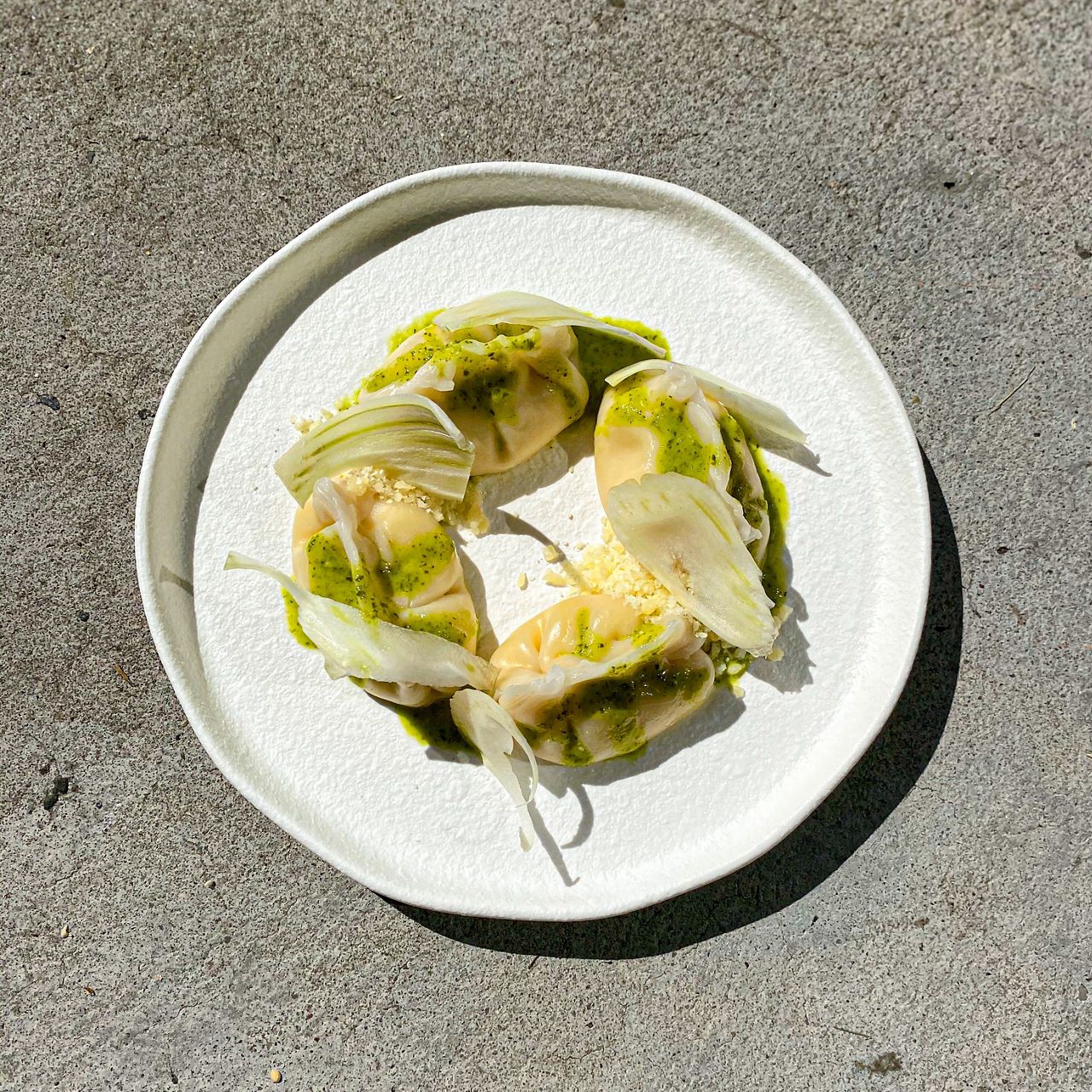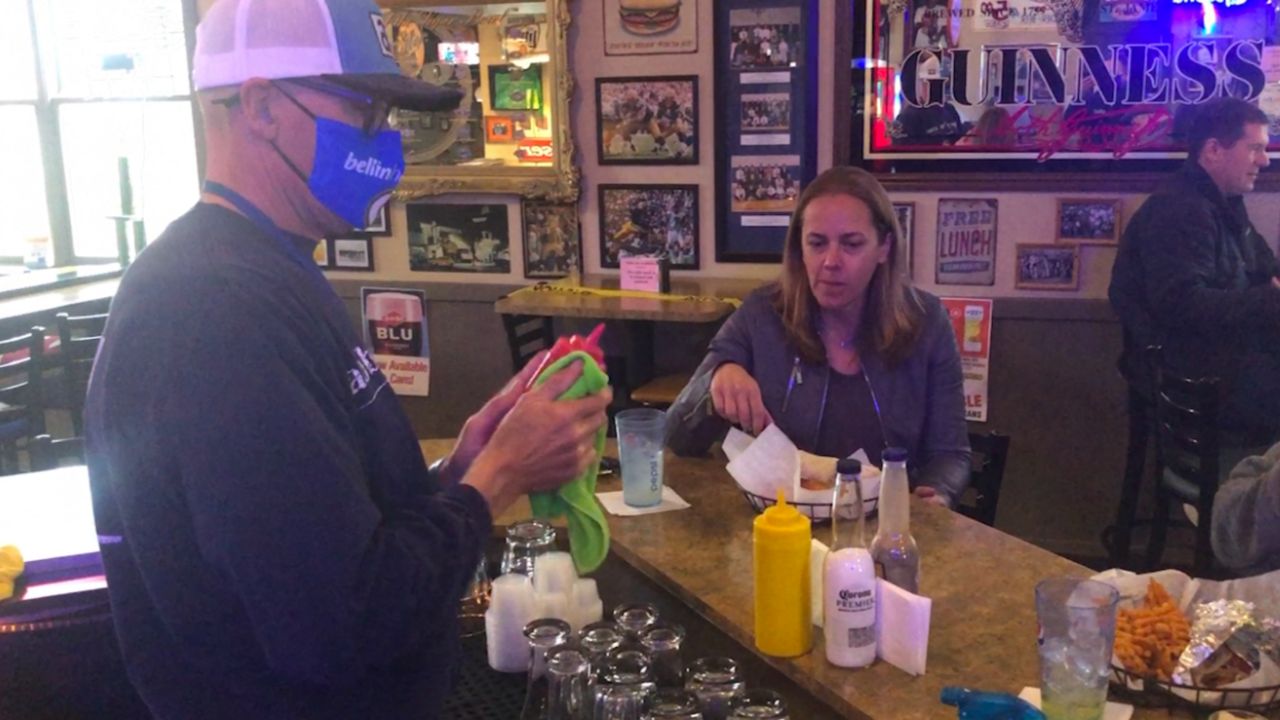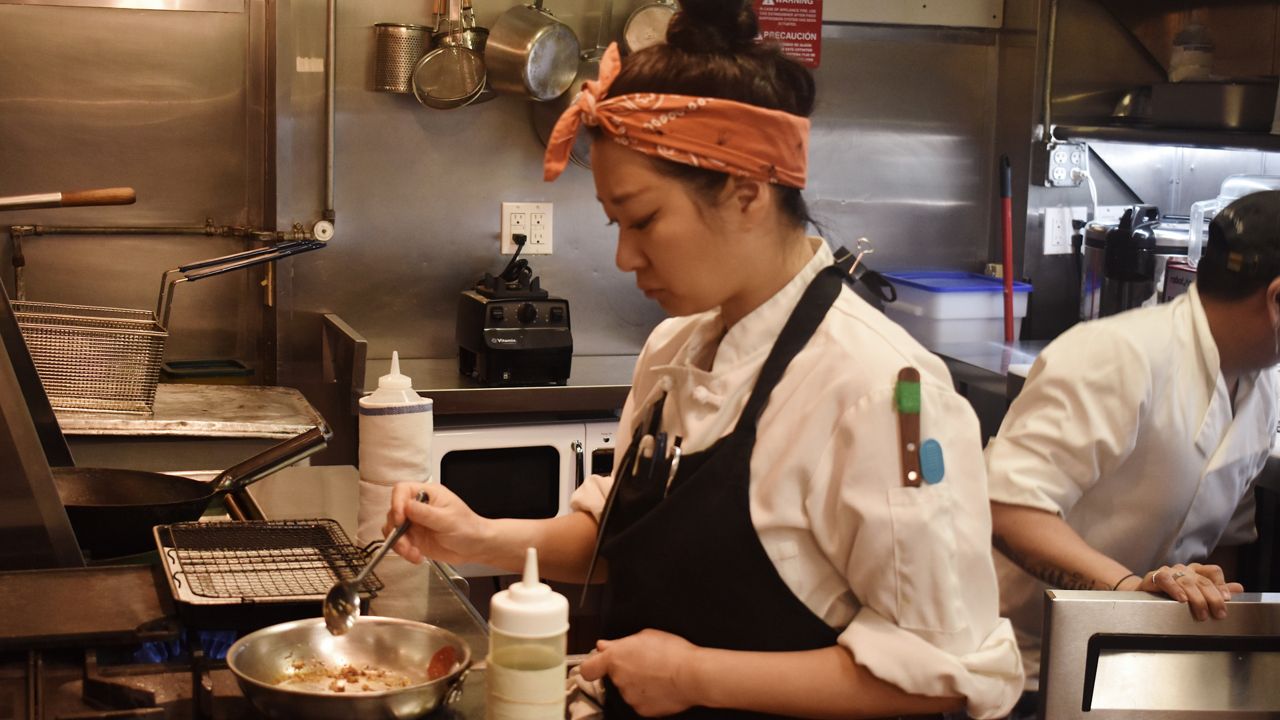Lives and businesses alike have been upended by the coronavirus pandemic, with the restaurant industry particularly hard-hit by regulations intended to mitigate the spread of the disease.
Public health experts have repeatedly warned that indoor dining — particularly in small, crowded restaurants where individuals are drinking and can take off masks when not eating — poses a risk for airborne transmission. The U.S. Centers for Disease Control and Prevention recently described such indoor dining as “high risk.”
As of Dec. 1, nearly 17% of U.S. restaurants were “closed permanently or long-term,” according to a study conducted by the National Restaurant Association. That percentage amounts to nearly 110,000 service-industry businesses across the country.
With little consistent federal guidance on reopening businesses, states have issued widely varying guidance to restauraters on how to safely operate their businesses.
In New York, for example, restaurants were allowed to operate indoor dining services at 25% capacity beginning Sept. 30, following a six-month hiatus. That decision was reversed by Gov. Andrew Cuomo on Friday, who ordered restaurants to close indoor services again beginning Monday, Dec. 14.
The reimplemented restrictions will likely cause many already-struggling restaurants — through no fault of their own — to close.
Restaurants that have survived continue to do so with a combination of ingenuity, creativity, or just "a little bit of luck."
Here are some restaurants across the country that have adapted to survive the pandemic:
When Chef Kyungmin "Kay" Hyun opened her second New York City restaurant, Mokyo, in November of last year, there was no way she could have known a global pandemic was about to sweep across the United States.
It was already hard enough appealing to New Yorker’s palates, Chef Kay told Spectrum News, in a city whose thousands of restaurants expose residents to a vast array of cultures and foods.
Still, Mokyo stands out in the food-centric city: Chef Kay’s menu is based off of dishes from her home country of South Korea, infused with blends of Spanish and South American themes. Her ideas usually come from her travels, but with the COVID-19 pandemic raging on, Kay has turned to a more modern source of inspiration: the internet.
“I like to travel a lot, so I was finding new ingredients or new techniques because it's difficult to introduce something new to New Yorkers who have been exposed to many types of food with different cultures or restaurants,” Kay said. “Now I can't go anywhere, so these days just maybe YouTube or TV.”
One dish that encapsulates Mokyo’s international menu happens to be Chef Kay’s personal favorite to cook, as well as one of customers’ favorite dishes to order: the corn dumpling.

“I added a lot of Spanish flavors because I love Spanish food,” Kay said of creating the signature dish. “That corn dumpling is done elote style, like grilled corn on the cob … Visually it's Asian but all the ingredients are South America, Mexican flavors. So that's personally [my favorite], that presents my colors well.”
Chef Kay has plenty of experience in changing up her menu to accommodate customers’ seasonal requests, but the pandemic has forced her to learn more about the desires of take-out customers in order to keep her restaurant afloat.
While Chef Kay’s other restaurant, Thursday Kitchen, is geared towards take-out orders, Mokyo was designed to be a more intimate, personal dine-in experience with visually appealing plates — a hard atmosphere to come by as restaurants in the city were again ordered to close indoor dining just this Monday.
Over the past few months, Kay has begun to recognize that delivery orders come from “a different kind of customer,” one who values being full over the visual presentation of food.
And so, a slight revamp of Mokyo’s menu is underway, with dishes that include raw meat or fish being pushed to the side. The new menu offerings, like Kay’s corn dumpling, are Korean-Spanish fusion style, but slightly heavier than a typical in-house Mokyo dish.
“On one of my menus I have gumbo, that's kind of Asian-fusion with a Cajun style and Gochujang, which is a Korean chili-pepper paste,” Kay said. Similar to her corn dumpling, the gumbo “includes plantains instead of potatoes. So plantain, it fills you up, it's filling, it's a protein, plantain. It's warm and then soupy so it makes customers happy when they order gumbo.”
Despite all of the hardships Chef Kay has endured over the past year, she still aims to uplift her customers through food.
“I want to make some kind of menu which makes people happy when they order something at home,” she said.
David Doherty has had a front seat to an unbelievable year in the restaurant and hospitality business — right in front of the grill.
“It’s been a rollercoaster,” the kitchen manager at The Abbey Bar & Grill in De Pere said. “My new favorite phrase is nimble. I’ve had to be more nimble in scheduling and ordering.”
Nimble is also what’s helping keep The Abbey and other businesses across the state alive.
The restaurant and tavern is being recognized as part of a Wisconsin Economic Development Corp. contest launched this fall highlighting innovative and creative ways small businesses are adapting to the pandemic.

Abbey owner Kerry Counard said that encompasses everything from keeping staff safe at work and in the community to beefing up take out business and finding a new presence on social media.
“My first day, when we were forced to go take out only, we had one customer. Which kind of opened my eyes and I said, ‘Oh my goodness, what am I going to do,’” he said. “I went on social media and started Facebook posts on a daily basis, Twitter on a daily basis. Stuff I’ve never done before.”
His kids chided him about becoming an internet influencer.
“I truly have no intention of being an influencer, unless it means I can save my business,” he said.
The business has also found a way to help give back a little to the community.
A couple times this year it has used money supporters of The Abbey sent Counard to buy — and give— gift cards to take out customers.
The goal: they pass them on to someone else.
“They could in turn take those gift certificates and bring them to front-line workers, maybe people who couldn’t afford to eat out,” he said. “Or just people they knew were in need.”
The Abbey, one of the top 17 innovators in the contest, is girding itself to survive whatever it’ll face in the coming weeks and months.
“We’ve positioned ourselves to dig our nails into the cliff, so to say, and just hold on for dear life,” Counard said.
Petros Breakfast and Lunch in Chicopee served their last meal on Sept. 27, but when a couple who were customers at the restaurant, Jon and Halina Novak, got news they were closing, they decided to buy the business. On Dec. 15, they held a grand reopening.
"I feel like it's a special place," said Jon Novak. "Whenever I came here I felt like I was visiting a friend and I wanted to make sure that continues."
The Novaks learned their favorite breakfast spot was closing when eating there after church on a Sunday. The couple said that is when they knew it was time to give back to the community.
"It was instinct, my husband and I, that we should try, so all of a sudden it just happened, and we are very happy," Halina Novak said.
Her husband mentioned it was a "grassroots thing," which is why they wanted to keep Petros, and what it stands for, alive.
After more than two months, they reopened the restaurant under the same name and kept the menu the same. They gave jobs back to the entire staff, who they said always provided them with the best service when they were customers.
Their nephew, Krzysztof Socha, was among the crowd who came to the grand reopening. He retired from the Army and came back to Chicopee. He was excited to see his family take on this new adventure and wanted to show his support.
"It broke my heart being all the way over there, and now that I am home, it's just exciting seeing everything opening back up and being with family, helping family out," said Socha.
During the pandemic, where times are tough, the new owners and city leaders are excited to see Petros play an important role in helping the community.
"When you have a pandemic going on and people are concerned about food insecurities, it's nice to see a restaurant, within walking distance of the center, reopen and provide such hearty meals for people who can really get one or two meals out of one," said Mayor John Vieau.
Vieau went on to say the city is very happy Petros will continue to be part of the Chicopee community, and how great it was to see them take on this opportunity.
"We just learned we have to live in the pandemic, we have to learn somehow," said Halina. "We just have to keep the distance and just sanitize everything and keep going."
During the grand reopening, the restaurant was busy all morning. A lot of regular customers came back out to show their support to the new business owners. All social distancing and safety guidelines were practiced. Masks were required, and all guidelines Governor Charlie Baker put in place for restaurants were followed. The staff also took all the proper sanitation measures.
For the last year and half, Francesco Zimone has poured his heart, soul and savings into recreating the authentic experience of Napoli’s famous L’Antica Pizzeria da Michele here in the U.S.
If that name sounds familiar it’s because it’s the same pizza spot that Julia Roberts visited in the film “Eat, Pray, Love.”
His dream is to serve a little slice of Italy in Los Angeles.
“The most important ingredient on the pizza, basically love,” Zimone said.
The opening of his Hollywood restaurant in May of 2019 was a success, he said. Then, the pandemic hit and his bills began to pile up. He was able to hold on, thanks in part to his breezy, open-air courtyard until earlier this month, when Gov. Gavin Newsom announced new stay- at-home orders, throwing Zimone yet another major curveball.
“The last few days have been very heavy,” he said. “I cannot deny that I don’t sleep anymore.”
Determined to find a way through, Zimone turned his parking across the street into a drive-in movie theater, where people can eat his famed pizza while still enjoying a safe night out.
“We want to be a place like a little happy island in the middle of whatever is happening right now,” he said.
In the last few days, he’s put up a big screen and installed an F.M. transmitter. He also added some lights for a little ambiance.
Right before the big opening, Zimone gathered his team for a last minute briefing. Excited and a little but nervous, he hoped his customers would show up, not just for him, but also for his staff.
“Keeping us in business is going to give me the chance to pay salaries,” he said.
Luigi Ocone and his family were happy to make the trip from West Hollywood if it meant a night out of the house.
“It’s been very hard,” he said. “We have to come up with new activities, my wife especially."
The parking lot began to fill up with customers, many of whom have come to support their favorite restaurant. It’s not quite a full house but for Zimone it was a ray of hope that maybe, with some hard work and a little bit of luck, he might be able to survive.
“I am so happy, honored, I have made so many friends,” Zimone said, choking back tears.
Many small businesses and employees have endured a lot during the pandemic, and Crafted Meadery is another case, but its owner is grateful he’s been able to navigate through the hard times.
Owner Kent Waldeck was already used to working from home, because Crafted Meadery is attached to his house.
However, he originally was in the corporate world, and brewing was just a hobby.
“I started off home brewing,” said Waldeck. "Every home brewing book has, in the appendix, a little section on mead. I wasn't very good at making beer. The mead we made was better.”
Mead is the world’s oldest fermented beverage.
“The best way I can explain it," said Waldeck. “Is mead is made from honey.”
Crafted Meadery has been perfecting its mead for years, winning competitions along the way.
“We do a lot of different stuff, a lot of crazy and innovative ingredients is kind of what we're known for,” said Waldeck. “This is our latest release. This is our cherry cheesequaker devices."
Crafted Meadery has a lot of mead to satisfy a sweet tooth, and plenty of other cravings.
“That's the fun thing with mead, it's really an open pallet that you can do a lot of different things with,” said Waldeck.
Like other small businesses, Crafted Meadery had to adjust with shutdowns and other hardships forced by the pandemic.
“Our wholesale business is a big part of what we do," said Waldeck. "Selling to distributors and wholesalers in different states so they can go sell our products to bars and restaurants, bottle shops and grocery stores, and a like, that really went away completely for about three months.”
Luckily though, it was able to come out on the other side. Now, the business is seeing the light at the end of the tunnel. According to Nielsen's market data, total alcohol sales increased around the country by 24 percent during the pandemic.
It’s in 38 states as well.
"What we have noticed over the last four months is we've seen this gradual increase, where now things have been pretty healthy and good." said Waldeck. “Online sales through the pandemic have really spiked. It's really helped bridge the gap through the more lean months.”







